Antlers have a relentless rhythm.
HORNS: Antlers are not horns. Antlers regrow annually; horns are permanent. Antlers grow at the tips; horns grow at the base. Antlers branch; horns do not.
Over the period of a year, antlers bud, grow covered with velvet, harden and lose velvet, are used in sexual combat, repulse predators, and get discarded. This sequence is then repeated to produce a larger and more complex structure the following year.
Antlers: This posting discusses the white-tailed deer for this deer offers the most antler sightings. However, I have photographed antlers on the four less frequently seen local cervids: moose, elk, caribou, mule deer.
Yet, any observation of antlers is a matter of happenstance. Although this feature of the white-tail deer is shown here, they are only found on males, and males are not as often seen at the valley bottom, so being able to track their vagaries is chancy. Consequently, this sequence of images has been assembled using many different deer taken over multiple years.
Two white-tailed deer pause below a willow tree by the lakeshore. One, with antlers, is clearly male. At this distance, the sex of the other is unclear. Is it a female, or a male that has lost its antlers? Thus begins a exporation of antlers. (Picture courtesy of Cynthia Fraser.)
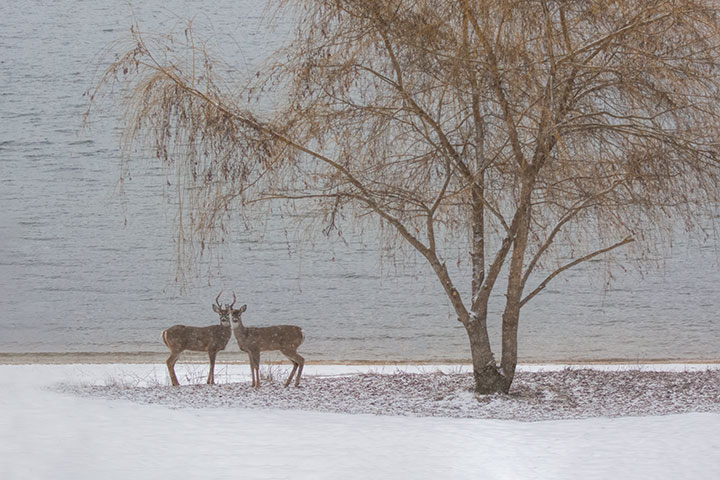
It is July and is this fawn’s first season. As yet there is no indication of the fawn’s sex and certainly no sign of antlers.
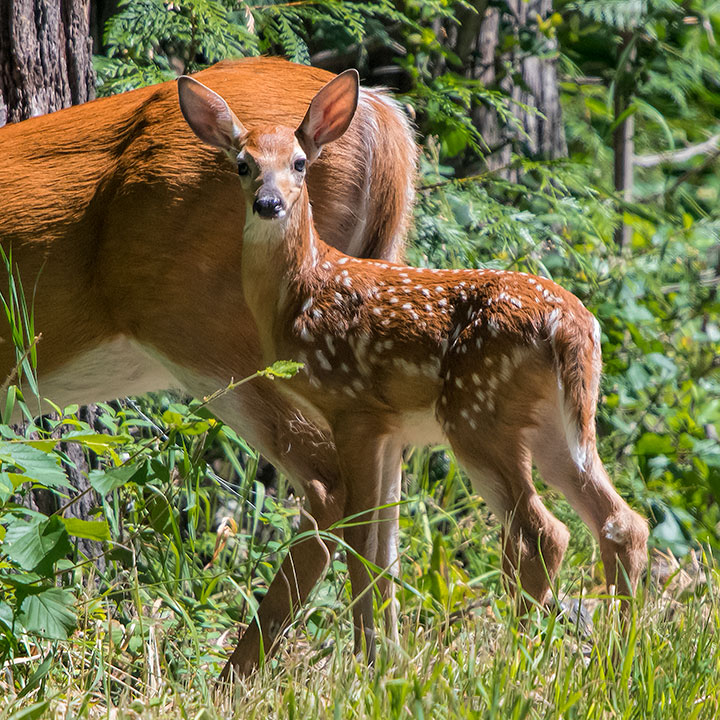
The first sign of a fawn’s antlers to come appears in early August when a dark spot turns up above and behind each eye. It is probably dried blood caused by the pedicle breaking the surface (rather like teething). The pedicle is the base from which antlers will subsequently grow.
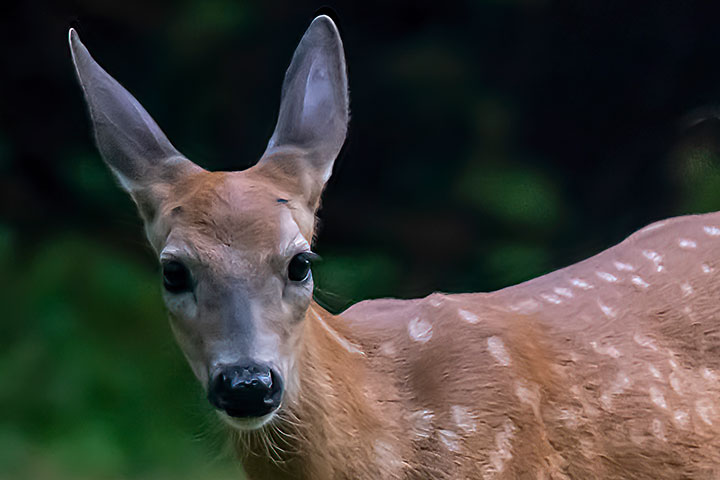
Now in September, the fawn’s pedicles can form two buttons on the forehead, but the first antlers will not arrive until the following year.
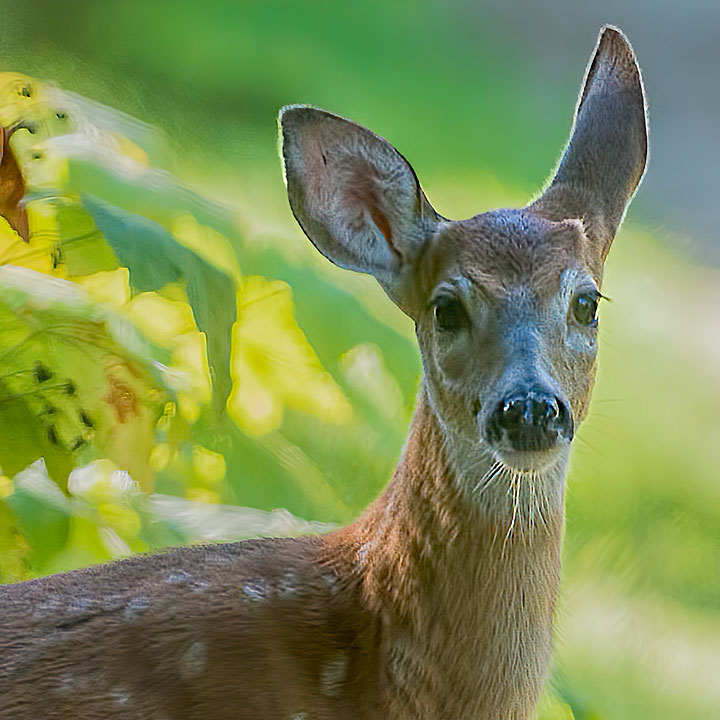
Nothing then happens until the following April when antler buds appear.
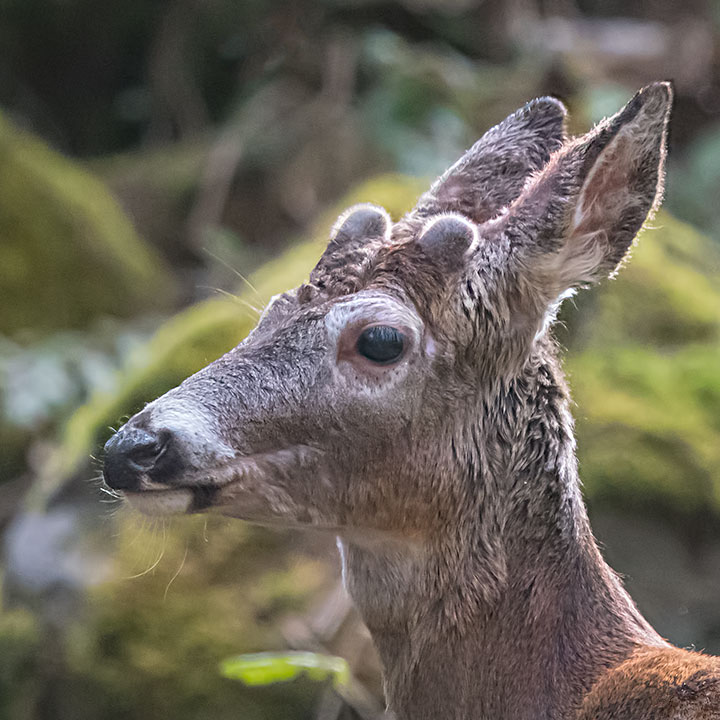
The first year’s antler growth produces little more than simple spikes. Succeeding years produce larger and more complex structures. However, we are getting ahead of ourselves.
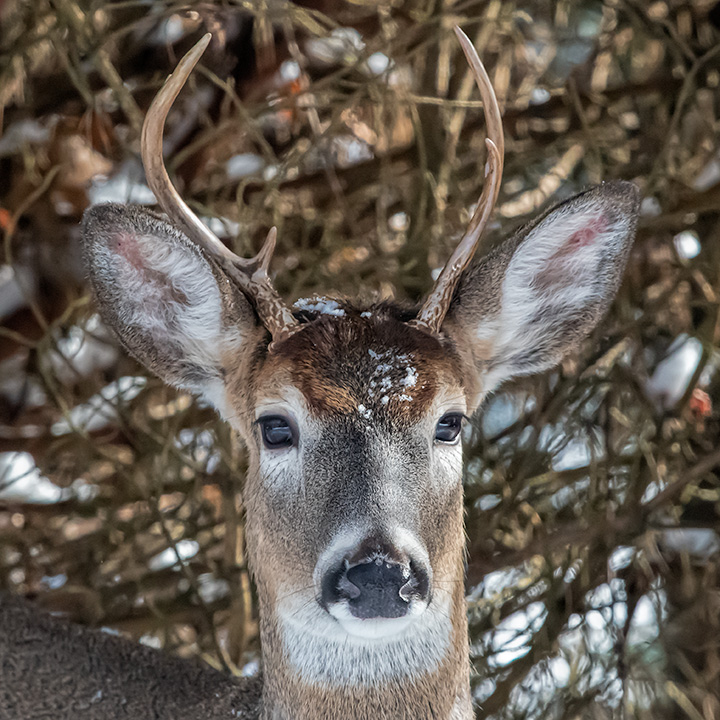
Extensions of the pedicles on a deer’s skull, antlers are a composite structure of bone, cartilage, fibrous tissue, skin, nerves, and blood vessels. They grow faster than any other mammalian bone for they must be grown anew each year. While they grow, they are covered with a vascular skin known as velvet, and it supplies oxygen and nutrients to the growing bone. The velvet covering makes the antlers look bulbous.
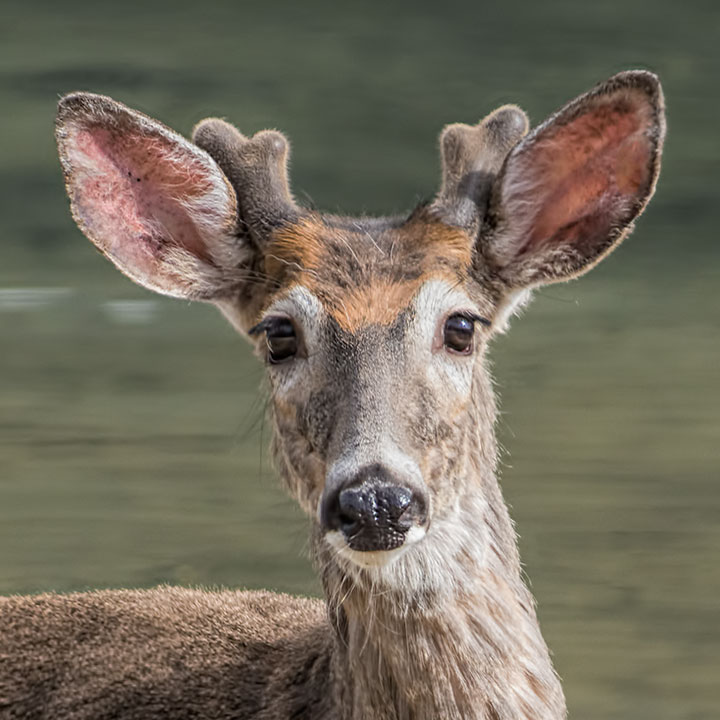
These are velvet-covered antlers in mid August. At this time the growth rate is as much as six millimetres per day. However, the velvet seems to be rather sensitive, and deer resist allowing contact with it.
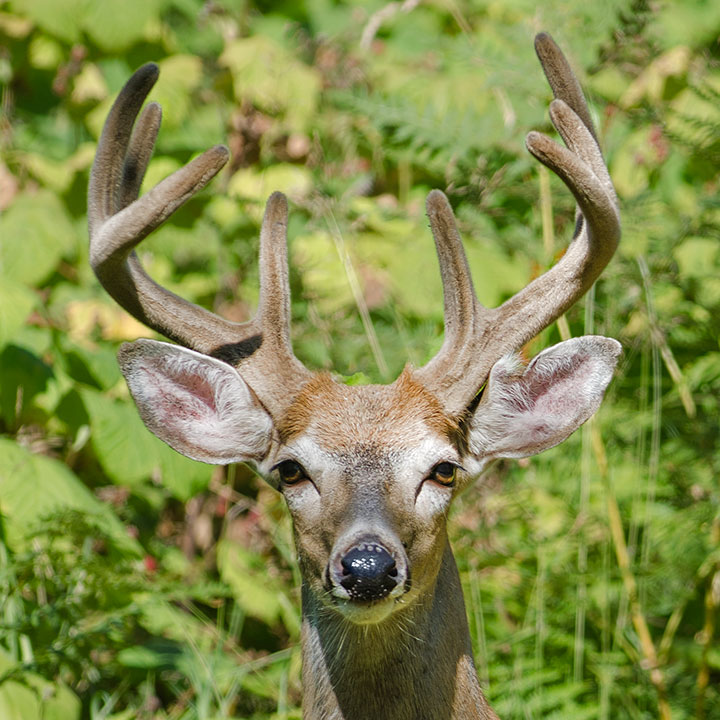
It is now the end of summer. The antler has achieved its full size; the velvet is falling off and the antler’s bone hardens and dies. This dead bone structure is the mature antler, which is now ready for both combat and predator repulsion.
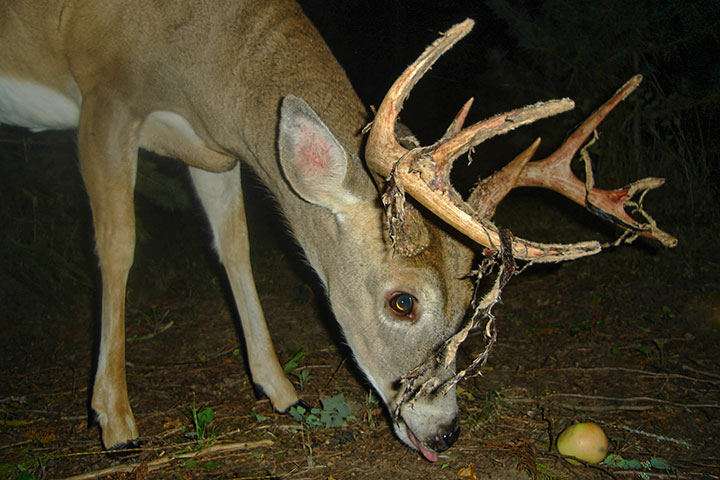
This pair of males at the end of August provides an interesting contrast. Although the antlers are small (perhaps second year) the buck on the left is still in velvet, while the one on the right has mature antlers. The transition is occurring.
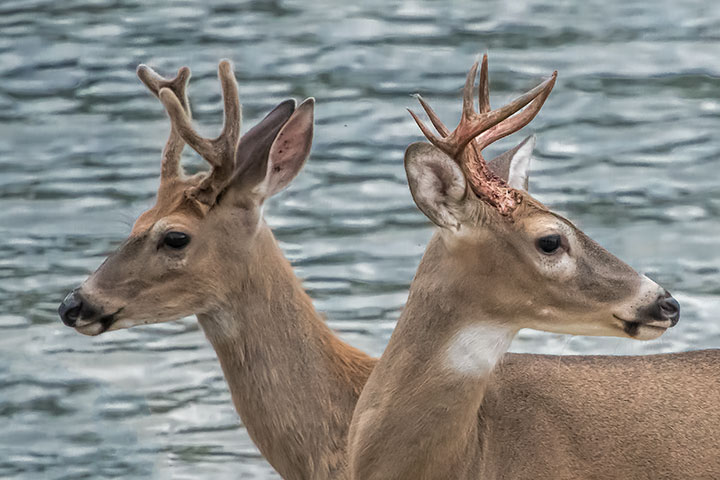
It is apple-stealing season and a buck with mature antlers scarfs one. Alas, I have no pictures of the rut — the period of sexual combat between males for access to females. So, a picture of stealing apples will have to suffice.
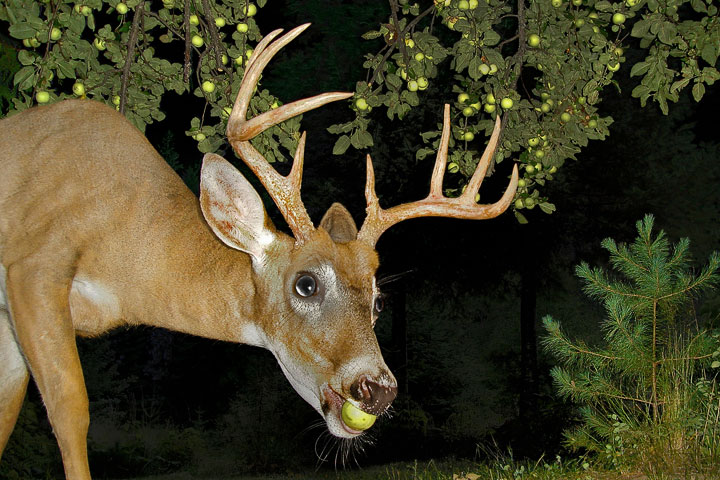
We now come full circle to the initial picture of two deer under a willow tree taken at the end of January. It is antler shedding time and the deer on the right is seen to be a male that did not have a clean antler loss. They fractured as they fell off. This might have come about as the result of a pedicle or skull injury. However, it is clear that the loss of last year’s antlers is now underway. Soon the growth of new, larger, and more complex antlers will start. The beat goes on.
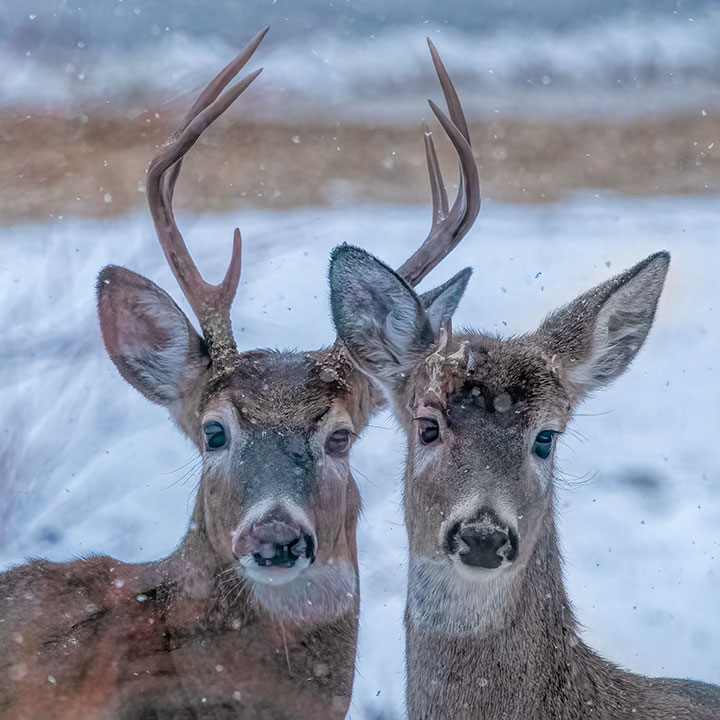

A wonderful sequence and explanation, Alistair. Thank you
Thank you for this sequence. Several times while walking my dog I have seen a beautiful male deer with a full rack of gorgeous antlers. He is on the side of the highway and on the other side of a fence from me. He stares fearlessly and unblinking at me with no intention of running away.
Fascinating! Thank you for this explanation.
Really enjoyed this – those eyes!!!
Have had a number of deer on the lawn this year – a mom and child, a mom and two kids, and a male and two females. They’re enjoying the bird seed that the birds spill from the feeder, all over the snow.
The white tail male had a lovely rack and came to feed at the edge of our deck. I got a great photo of him when he raised his head to the level of the deck.
That was great, Allister!! I love the photos of the little guys with their nubbin horns. Makes me realize that while we often see deer, we have no idea of the cycle the males go through to get those antlers!
Can you tell the age of the deer by the number of antler points they have? or is eight the max? Thank you, it’s so interesting.
Thank you for the lovely photos and explanation of the cycle that a deer goes through via their Antlers! Very interesting!
You taught us lot, as usual…appreciated too!
Thank you, Alistair. After reading your wonderfully researched and presented posts, the joy that I derive from my time outdoors is ever greater. This post creates even more respect for the deer who share the land we’re fortunate to live on.
Wow….